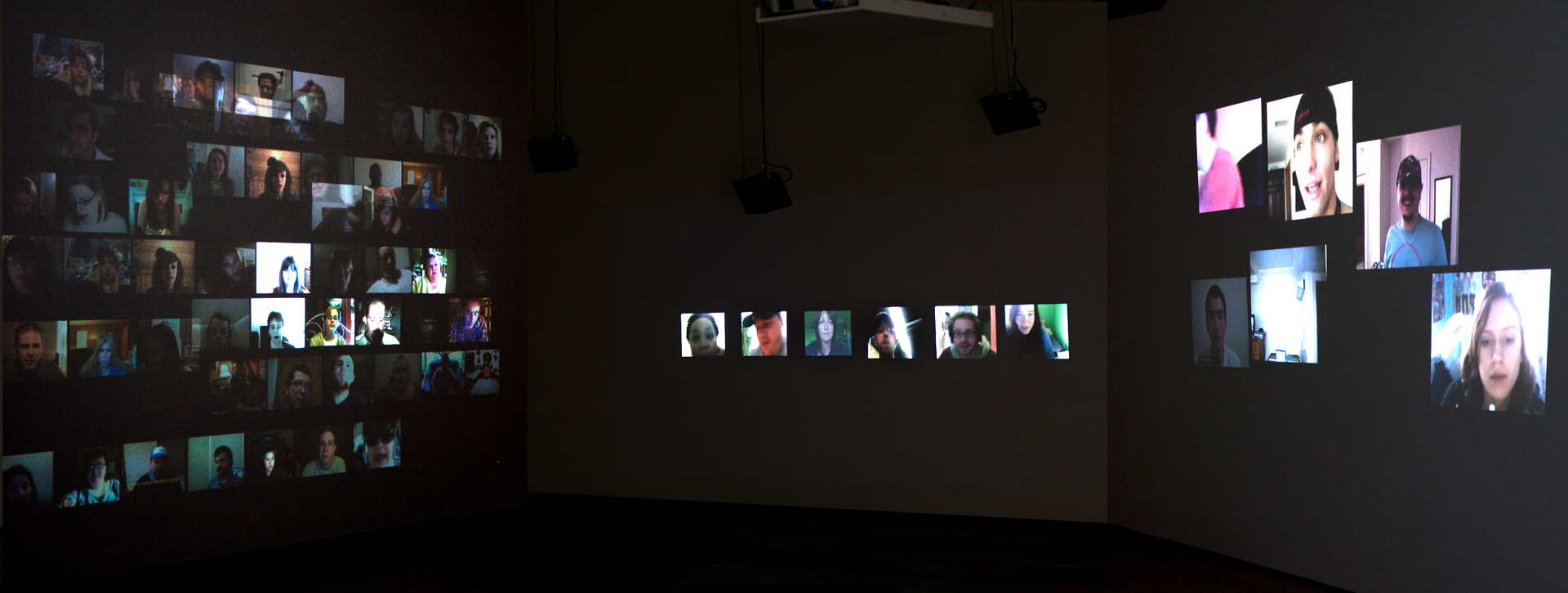Out in public:
An evening screening and Q&A with media artist Natalie Bookchin, moderated by Bart Rutten (Stedelijk Museum, Amsterdam)
Date: Tuesday 15 March, 19.30-21:30 hrs
Location: SMART Project Space, Arie Biemondstraat 101-111 (Auditorium)
Tickets: 4 euros at the door
As part of the Video Vortex #6 conference in Amsterdam (March 11-12), the Institute of Network Cultures in association with SMART Project Space invite you to join in an evening screening and discussion with internationally exhibited media artist Natalie Bookchin. Using webcam footage, YouTube videos and vlogs as source material throughout her work, Bookchin’s video installations explore new forms of documentary, address conditions of individuality, mass connectivity and isolation, and uncover the stories we are telling about ourselves and the world.
As a follow-up to the on-stage conversation with Bookchin at Video Vortex #6 on Saturday, March 12th, where she will discuss the relationship between the culture of video on the internet and her artistic practice, this evening invites the public to a ‘show and tell’ of her recent works. Natalie will screen and discuss her work, with Bart Rutten (Stedelijk Museum, Amsterdam) moderating the Q&A session.
_____
Works screened and discussed during the evening:

Mass Ornament, 2009
Mass Ornament (2009, 7 min), single-channel HD video installation.
Taking hundreds of clips from YouTube of people dancing alone in their rooms, Mass Ornament edits together and choreographs these bodies into waves of coordinated movement. Creating a mass dance reminiscent of historical representations of synchronized bodies in formation, from the Tiller Girls and Busby Berkeley to Leni Riefenstahl, Mass Ornament speaks to Siegfried Kracauer’s 1927 essay, from which the video installation takes its name. In his text, Kracauer argued that the synchronized movement of chorus line dancers reflected the logic of a Fordist economic system. Shifting between depictions of masses and individuals, the work explores how these YouTube dancers, alone in their rooms, perform a dance that is simultaneously both extremely private and extraordinarily public and is, in its way, a perfect expression of our age. Just as rows of spectators once sat in theaters and stadiums watching rows of bodies moving in formation, today, millions of viewers sit alone in front of their computers watching individual dancers voluntarily move in formation alone in their rooms.

Testament, multi-channel installation, 2009
Testament (2009), series of video installations.
Testament is an ongoing series of video installations made from fragments of online video diaries that explore contemporary expressions of self, and the stories we currently tell online about our lives and circumstances. In its different chapters, the work explores personal proclamations of sexuality in I Am Not (2009, 2 min), the struggles of being fired in Laid Off (2009, 4 min), and the grocery list-like ordering of personal pharmaceutical use in My Meds (2009, 1’06 min). Clips are edited and placed in sequence, offering streams and patterns of self-revelation, narrative and language as they flow across the internet. As in a Greek chorus, individuals echo, respond to, contradict, add refrains, iterations, variations, join in, and complete solo narrations. Using personally recorded declarations, the Testament series reflects on the peculiar blend of intimacy and anonymity, of simultaneous connectivity and isolation that characterizes social relations today.

Laid Off, from Testament series, 2009
Now he’s out in public, and everyone can see (in progress), multi-channel video installation.
As a work in progress, Natalie will show parts of the newest chapter of Testament called, Now he’s out in public, and everyone can see. In this multi-channel video installation fragments of found online video diaries in which speakers describe and evaluate four very prominent African American public figures, as they recount a number highly charged, racialized media scandals, are turned into a collective performance. Through interweaving clips as they intersect around themes of race and class identity, a narrative exploring current popular attitudes, anxieties and conflicts about race emerges.


